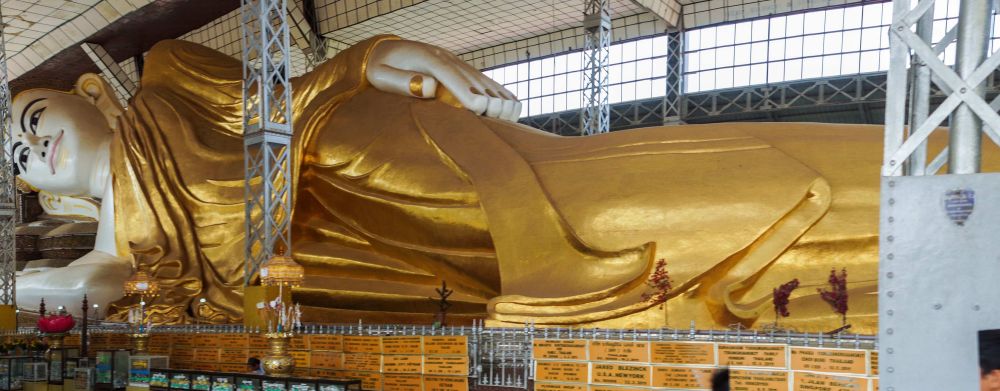

The Shwethalyaung Buddha is esteemed as one of the most remarkable reclining Buddhas in Myanmar, situated in the city of Bago (formerly Pegu), approximately 80 kilometers northeast of Yangon. Historically, Bago has been a significant center of Theravada Buddhism and has played a vital role in the religious tourism of Myanmar.
The Shwethalyaung Buddha is believed to have been built in 994 during the reign of Mon King Migadepa. The statue, along with the city of Bago, flourished as a pilgrimage destination for centuries before the area fell into decline and the statue was lost to the jungle overgrowth after the Burmese-Siamese War (1765–1767).
It was rediscovered in 1881 by a British railway contractor when the area began to be developed during the British colonial rule of Burma. The British facilitated its restoration, sparking a revival of Bago as a religious destination. Ever since its restoration, the Shwethalyaung Buddha has been a major tourist attraction and a symbol of the resurgence of Bago.
The Shwethalyaung Buddha is 55 meters long and 16 meters high, making it one of the largest reclining Buddha statues in the world. With an impressive display of artistry, the Buddha's face conveys a serene composure, and the figure is adorned with intricate glass mosaic details. It's a pinnacle of Mon artistic heritage and draws countless visitors who come to appreciate its cultural and religious importance.
In recent years, Bago and the Shwethalyaung Buddha have seen an uptick in tourists due to Myanmar's opening up to international travel. However, the tourism industry has been volatile, heavily impacted by political developments and the COVID-19 pandemic.
Tourism strategies have increasingly been focusing on sustainable tourism and community-based tourism, which empowers local communities while offering a more authentic experience to visitors. Tourists are shown to have a growing interest in unique cultural experiences, seeking to learn and participate in local traditions and lifestyles.
Accessibility improvements to the region have also contributed to the growth in tourism. Efforts by the government and private sector to enhance conditions for travelers, including better accommodation options, information availability, and transport infrastructure, are making Bago and its historical sites more approachable for international and domestic tourists.
When visiting the Shwethalyaung Buddha, travelers are often amazed by the sheer scale and tranquility of the site. It is customary for visitors to walk around the statue and observe the detailed mosaics and the surrounding pavilions which contain murals depicting the life story of the Buddha. The site continues to be a place of active worship, so visitors can also witness and participate in Buddhist rituals and practices.
The visit to the Shwethalyaung Buddha often forms part of a broader exploration of Bago's ancient pagodas, monasteries, and bustling markets, contributing to the rich tapestry of experiences available in this historic city.
Preservation and conservation efforts are crucial in maintaining the integrity of this historical monument. There is ongoing collaboration between local authorities, international heritage organizations, and the government to ensure that the Shwethalyaung Buddha can be preserved for future generations. These efforts not only serve to protect the cultural heritage of Myanmar but also to maintain the appeal of Bago as a significant tourist destination in Southeast Asia.
The Shwethalyaung Buddha is not merely an ancient and venerated statue but a living testament to Myanmar's cultural resilience and an anchor for tourists seeking a blend of spiritual enlightenment and historical exploration. With the increased push for sustainable tourism practices and heritage conservation, the Shwethalyaung Buddha continues to be a beacon of Bago's rich historical and spiritual landscape in the modern age.